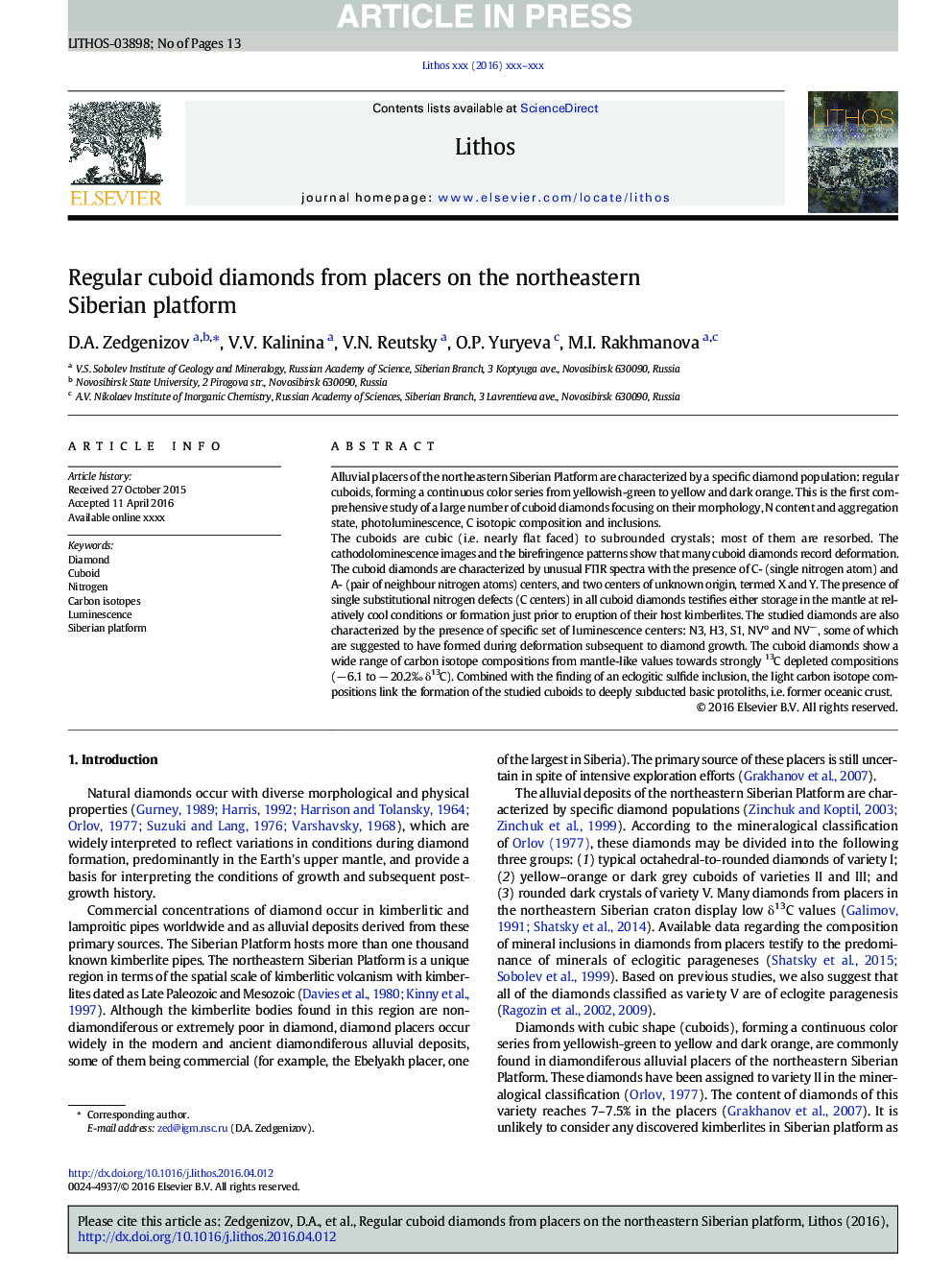| Article ID | Journal | Published Year | Pages | File Type |
|---|---|---|---|---|
| 5784304 | Lithos | 2016 | 13 Pages |
Abstract
The cuboids are cubic (i.e. nearly flat faced) to subrounded crystals; most of them are resorbed. The cathodolominescence images and the birefringence patterns show that many cuboid diamonds record deformation. The cuboid diamonds are characterized by unusual FTIR spectra with the presence of C- (single nitrogen atom) and A- (pair of neighbour nitrogen atoms) centers, and two centers of unknown origin, termed X and Y. The presence of single substitutional nitrogen defects (C centers) in all cuboid diamonds testifies either storage in the mantle at relatively cool conditions or formation just prior to eruption of their host kimberlites. The studied diamonds are also characterized by the presence of specific set of luminescence centers: N3, H3, S1, NVo and NVâ, some of which are suggested to have formed during deformation subsequent to diamond growth. The cuboid diamonds show a wide range of carbon isotope compositions from mantle-like values towards strongly 13C depleted compositions (â 6.1 to â 20.2Ⱐδ13C). Combined with the finding of an eclogitic sulfide inclusion, the light carbon isotope compositions link the formation of the studied cuboids to deeply subducted basic protoliths, i.e. former oceanic crust.
Related Topics
Physical Sciences and Engineering
Earth and Planetary Sciences
Geochemistry and Petrology
Authors
D.A. Zedgenizov, V.V. Kalinina, V.N. Reutsky, O.P. Yuryeva, M.I. Rakhmanova,
